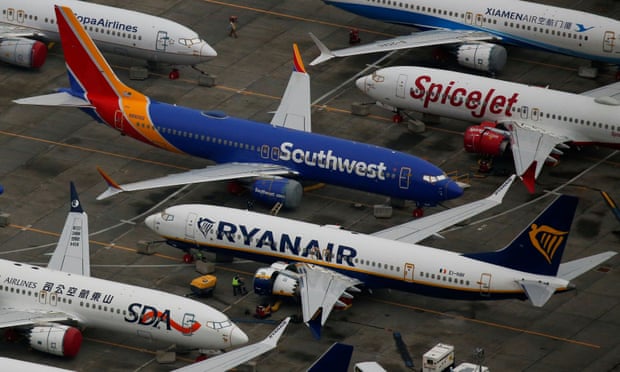ew corporate disasters are so big that they can be seen from space. Boeing’s 737 Max made that cut, with satellite images showing row upon row of undelivered planes, grounded after two fatal crashes killed 346 people.
Now the recovery will start in earnest, with regulatory approval and the restart of commercial flights imminent. The US Federal Aviation Administration last month approved the 737 Max for flight once more, and the European Union Aviation Safety Agency (Easa), the second key global regulator, has set Tuesday as the final deadline for problems or objections to be raised before it too gives a green light.
The crashes were a human disaster, leaving hundreds of families still mourning and, in some cases, still angry. Yet Boeing and the US regulator have expressed confidence that the plane is now safe, after unprecedented scrutiny. And there is little evidence from the history of aviation crashes that qualms stop many passengers from flying.
Nevertheless, the reintroduction of the 737 Max is still a key moment for Boeing in a crisis that has cost it well over $20bn (£14.7bn), and a chief executive. At a time when the pandemic has caused the biggest slump in commercial air travel ever seen, Boeing cannot afford any further problems with its bestselling plane.
The twin crises have forced Boeing to make swingeing job cuts, with 30,000 out of 160,000 workers expected to be made redundant by the end of next year, but it is spending millions to try to avoid further mishaps. It plans to hire 160 well-remunerated instructors to help pilots with the new systems, and to bring in 24/7 live monitoring of flights.
The first paying passengers on the recertified 737 Max in the US (Brazilian airline Gol operated the first commercial flight on 9 December) will take off on 29 December from Miami airport to New York’s LaGuardia. American Airlines will run one return flight a day on that route up to 4 January, before gradually bringing back more.
In Europe the first flights will take place at some point in the new year, barring a shock turnaround from Easa. In the UK and Ireland the first beneficiaries will be Ryanair. The Irish budget carrier has 210 737 Max planes on order, after adding another 75 this month.
Michael O’Leary, the Ryanair chief executive, waxed lyrical this month about his “fabulous” new planes. It is safe to assume that the voluble businessman used choicer words in private when negotiating what industry insiders believe will have been a rock-bottom price for the latest order (at list prices, the deal would be worth $9bn or £6.7bn). Similar exchanges were probably heard when Willie Walsh, O’Leary’s old sparring partner and then boss of British Airways owner IAG, signed a letter of intent to order 200 aircraft in July 2019, shortly after the 737 Max was first grounded.
Whether IAG confirms the order is an open question: Boeing’s biggest problem now is less getting its existing planes back into the air, but rather persuading pandemic-hit airlines to pay them enough for new planes to make a profit.
Yet the timing of the pandemic is also a strange accident of fortune for Boeing: while it has lost a lot of ground during what is undoubtedly its greatest crisis, rivals led by Europe’s aerospace champion, Airbus, have not been given a clear path to accelerate far ahead.






